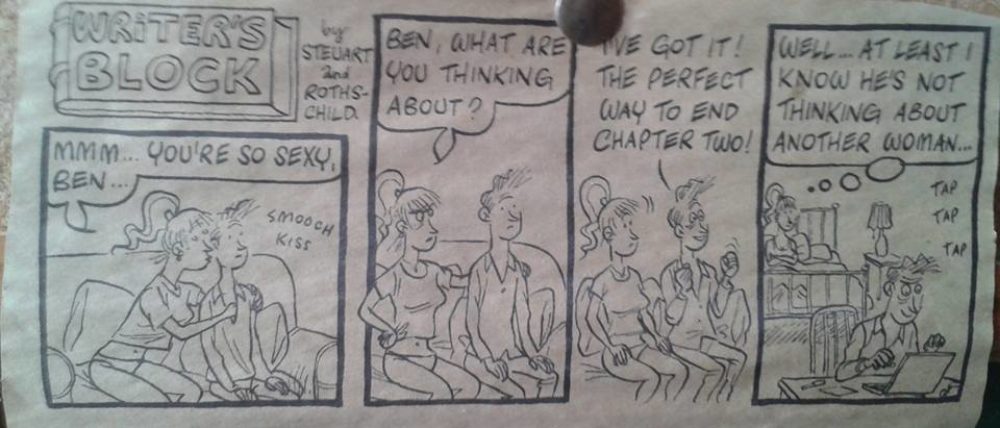The British Science Fiction Association is carrying out a survey of British science fiction and fantasy writers “to get a handle on the state of British sf”. I see no reason why everyone shouldn’t get to share my insights. So:
1. Do you consider yourself a writer of science fiction and/or fantasy?
I consider what I write to be science fiction and/or fantasy, and in my writing I try to contribute some new idea or concept to the field with each story or novel. However, not every idea that comes to me is necessarily science fiction or fantasy and it’s not impossible that one day I’ll get round to writing something in another genre.
2. What is it about your work that makes it fit into these categories?
The fact it contains concepts that are either presently impossible or not yet possible given our current understanding of the way the world works. To wit: alien life forms, starships, faster than light travel, time travel, technologically advanced Neanderthals.
3. Why have you chosen to write science fiction or fantasy?
It has always been my favourite genre, for the possibilities it offers: the outsider view of humanity; geeky fun with technological and/or philosophical concepts; and big explosions.
4. Do you consider there is anything distinctively British about your work, and if so what is it?
Two of my novels have been predicated on the idea of the British monarchy still being around, in recognisable form, in the 23rd century. I don’t think an American author would think twice about his nation’s way of life still being around 200 years from now, or there being a US Space Force: he might wonder how it came about but wouldn’t be surprised to learn it existed. As a matter of national pride I wanted to perpetuate some of the things I consider good about the UK: we are far from perfect but I wouldn’t want to live anywhere else. So, that is probably distinctively British.
5. Do British settings play a major part in your work, and if so, why (or why not)?
Only one novel has been physically located in the British Isles, but as it dealt with the English Civil War that’s not really surprising. Despite my answer to question 4, I try to make my futures as multinational as possible, in terms of setting and characters. Characters are generally multi-ethnic with names meant to imply mixed race ancestry. Why? Because my dream future would be like Cordwainer Smith’sInstrumentality of Man: all of us quite unmistakably one race, with no superiors or inferiors, but at the same time able to draw on the marvellous riches of our many cultural heritages.
6. What do you consider are the major influences on your work?
I don’t consciously set out to imitate anyone but I suppose I have been influenced by any writer who has given me a sense of joy and / or wonder in reading their work. Conversely, I do consciously set out not to imitate writers / TV shows / movies that get it wrong. Sometimes I actively try to correct the error (e.g. putting seatbelts in my starships …).
7. Do you detect a different response to your science fiction/fantasy between publishers in Britain and America (or elsewhere)?
I have a YA publisher so it’s hard to say: my editors don’t base their actions on the science fiction content. Scholastic Inc. in the US apparently had no difficulty with a novel about the Royal Space Fleet per se, but bafflingly renamed His Majesty’s Starship as The Ark. However, this latter decision has also baffled other American YA editors I have spoken to so it could just be a Scholastic thing.
8. Do you detect a different response to your science fiction/fantasy between the public in Britain and America (or elsewhere)?
Not really, no. Based on reviews I’ve read and mail I’ve received, audiences on both sides of the Atlantic have similar proportions of those who get it and those who don’t.
9. What effect should good science fiction or fantasy have upon the reader?
The sense of wonder! The reader should close the book with the feeling that they have been somewhere they could never have got on their own. New thought processes or neurons should have connected that mean they will never see the world quite the same way again.
10. What do you consider the most significant weakness in science fiction and fantasy as a genre?
More than any other genre? There is often the risk of everyone trying to put on the Emperor’s New Clothes, maybe not realising the Emperor actually knew he wasn’t wearing anything all along. I will stop stretching the metaphor before it breaks.
For example, someone coins the phrase “New Weird”. Suddenly everything is New Weird – until it isn’t, or people just get fed up with New Weird and move on to something new on principle, leaving all the official New Weird authors stranded.
11. What do you think have been the most significant developments in British science fiction and fantasy over the past twenty years?
The explosion in TV sf has been a significant development but not a particularly good one. We don’t have any TV executives who are particularly aware of what constitutes good sf. Therefore they scramble to imitate either Joss Whedon or Russell T Davies, not realising that Joss Whedon has a very wide-ranging understanding of sf&f (so trying to imitate Buffy kind of misses the point) and RTD doesn’t (so trying to imitate Dr Who will get you nowhere: the strengths of the series predate RTD by a long way).
On the plus side, the crop of authors who came up through Interzone are flourishing, and more power to them. Twenty years ago would a very good but not particularly famous sf author have got a £1m, 10 book deal? I think not.


